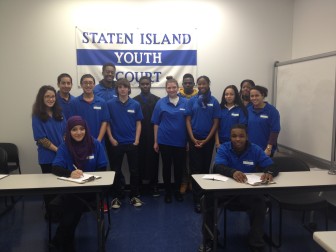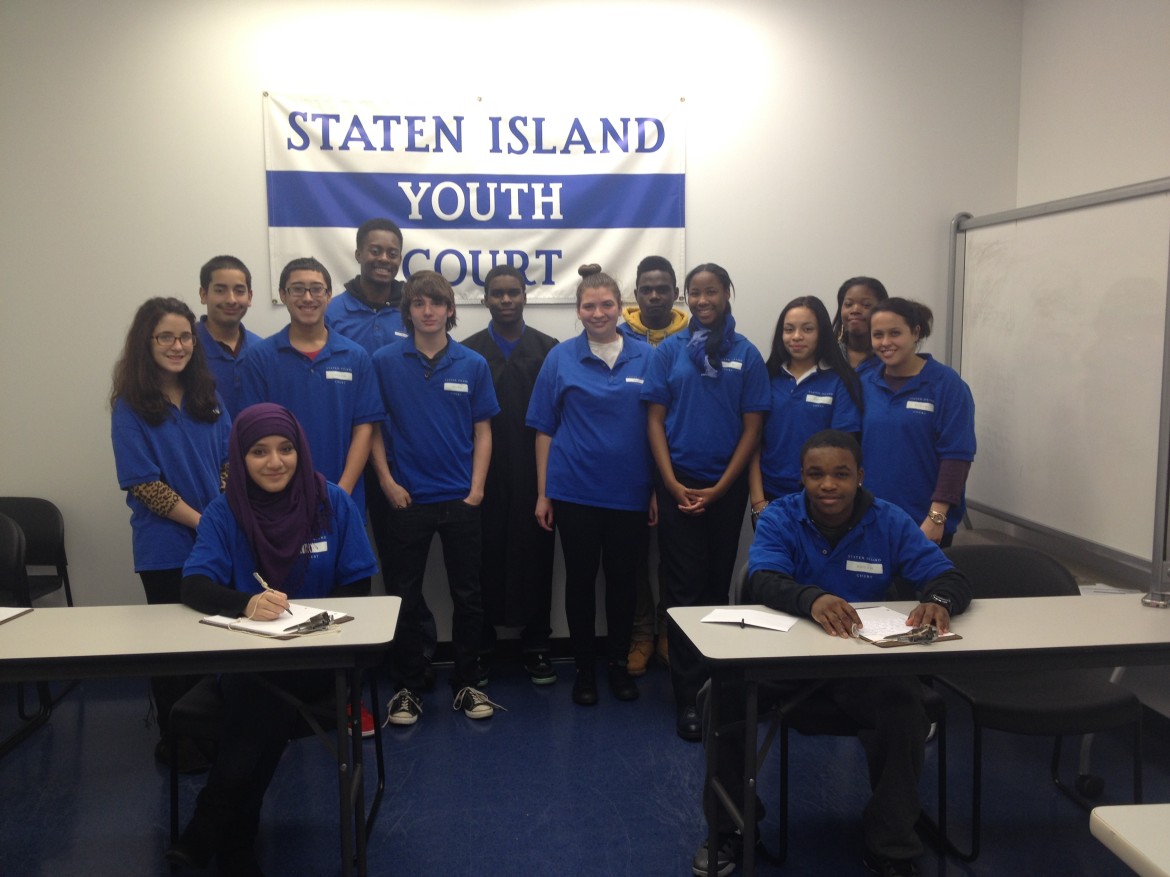
Courtesy Staten Island Youth Court
Teen volunteers from the Staten Island Youth Court
NEW YORK — Teenagers file into a nondescript office building, signing in on a clipboard at the front desk. They walk past a small waiting area and into a windowless room with bare white walls. The teens change into blue polo shirts with the Staten Island Youth Justice Center logo.
The teens take on different roles every day at the Youth Court. Today, Michael, 16, is the judge; Brendon, also 16, is the community advocate and Hareem, 17, is the youth advocate. Michael changes into judge’s robes while Brendon and Hareem take notes on their clipboards. Braylon, 16, plays the bailiff.
Jackie Romanoff, Youth Court coordinator, pops her head into the room.
“Do you guys know the offense?” she asks.
 “Criminal trespassing,” Hareem says, looking up from her notes.
“Criminal trespassing,” Hareem says, looking up from her notes.
The Staten Island Youth Justice Center is where the Youth Court holds peer-led hearings. Formed under the Center for Court Innovation in 2008, the court is made up of teens and provides an alternative to family or criminal court for kids age 14-18, where, if the teen is 16 or older, they would be tried as adults, and minor offenses like shoplifting or possession of marijuana would stay on their permanent record.
Braylon gets up from his seat next to the judge to escort the respondent (who would be called a defendant in a regular court). Fifteen-year-old Anton* (*not his real name) walks into the room. Romanoff tells him to put his school bag down, but he refuses to take his coat off. Pulling up his pants, he walks over to his seat and sits with his arms crossed and his hood up over his head. Braylon asks the room to stand in honor of the judge and recites an oath of confidentiality.
Brendon reads his opening statement as the community advocate, followed by Hareem who reads an opening statement in the respondent’s defense.
“[Anton] is 15 years old, a sophomore at Curtis High School with a 70 average. He plays basketball and lives with his aunt,” Hareem says. “Please keep this in mind when you hear his story.”
The hearing continues, and Anton tells his version of the events that led to his criminal trespassing charge. He was also charged with smoking marijuana, which he denies doing. The jury takes turns asking questions and Hareem leads her peers in a vote for Anton’s sanctions. He is ordered to attend a decision-making workshop and is assigned a 200-word essay. Then he is introduced to Romanoff’s intern Helen Hyppolite, who will track Anton’s case and make sure he fulfills his sanctions.
“I’ve been here since September,” Hyppolite, 24, said, “and I haven’t seen any repeat offenders.”
According to Court Innovation’s website, the court saw 158 cases in 2012. More than 94 percent of respondents completed their sanctions. But of the three cases that were scheduled this day, only Anton showed up. The ones who didn’t arrive will have their cases heard in criminal court, with a real jury and a real judge.
“[Anton] seemed kinda remorseful,” Brendon said.
“He was nice, I feel bad,” Anna said, a member of the jury.
“When you get really good kids in here and they get into trouble,” Brendon said, “it’s really sad.”
